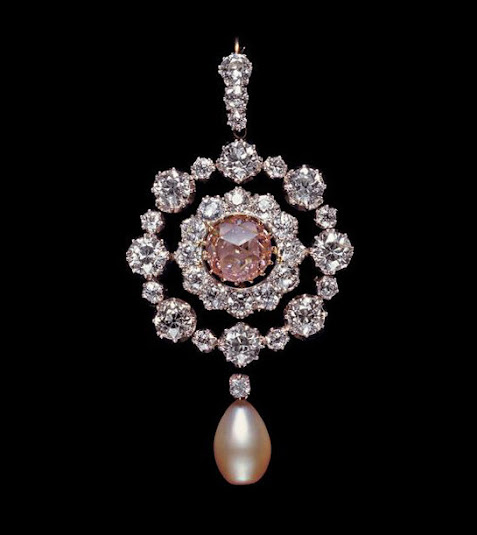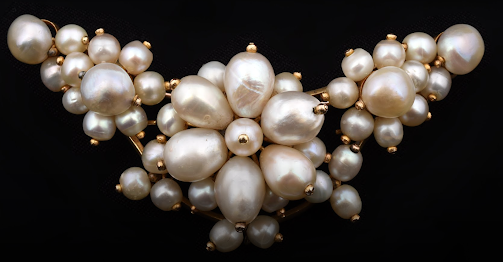 |
| Demantoid Garnets |
Did you know that Mother Earth makes 2 types of green garnets? Demantoid garnets were originally found in Russia’s Ural Mountains in 1851 and Tsavorite garnets were later discovered in East Africa in 1967.  |
| Demantoid - Wikipedia |
A demantoid Ca3Fe2(SiO4)3 is an andradite garnet while a tsavorite Ca3Al2Si3O12 is a grossular garnet.
Tsavorite is a rich, deep green like emeralds. Its color is derived from chromium and vanadium. A yellow tint from ferric iron is more characteristic of demantoid garnets.
A demantoid garnet has a higher dispersion and refractive index than a tsavorite garnet, giving it more fire*, brilliance* or sparkle.
A tsavorite garnet is harder, registering 7 - 7.5 on Mohs Hardness Scale compared to the softer demantoid garnet at 6.5 - 7.
While both are rare mineral gemstones, high-quality demantoids (from Russia) are often considered the standard for green garnets and are highly sought after for their intense sparkle and rare horsetail inclusions. These inclusions are feathery golden threads of chrysotile that curve to resemble the tail of a horse.  |
| Tsavorite |
Tsavorites are valued for their vibrant green hues and durability. Tsavorites are brighter and cleaner (meaning they have fewer inclusions) than emeralds.
At Tiffany and Co, I remember seeing demantoid garnets in a showcase that were yellow tinted and sparkled like crazy. Tiffany is known for its top of the line colored gemstones. Once again, we have to marvel at the spectacular beauty and versatility of Mother Nature!
₊˚💎𖥔 ݁ ˖ ✦ 💚 ‧₊˚ 💠 𖥔 ݁ ˖ ✦ 🟢 ₊˚ 💎𖥔 ݁ ˖ ✦ ₊˚
Lesson Time: *Gemstone brilliance is the overall white light reflection from a gemstone, contributing to its brightness and liveliness, while fire is the dispersion of white light into rainbow-colored flashes, created by the gemstone’s (especially a diamond’s) internal refraction. Both are key components of a gemstone's "sparkle," but brilliance is about the amount of white light returned, and fire is about the colorful light shows that occur. This is especially key when determining the value of diamonds. Colored gemstones sparkle far less than diamonds. Color is their most important factor.
You may also enjoy:

















































